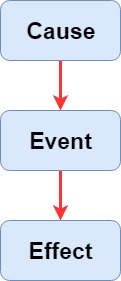Risk Register Analysis
(→Identify) |
(→Introduction) |
||
| Line 2: | Line 2: | ||
== Introduction == | == Introduction == | ||
| − | A risk register consists of three main elements. First and foremost it consists of the risk, secondly, it consists of the cause of the risk, and third it consist of the action of the risk. When building up a risk register these three elements will be covered by the following three steps. The first step is called '''Identify'''. Here all possible risk will be identified. The second step is called '''Assess'''. The possible risks identified must be evaluated regarding probability and impact on the PPP. The third step is called '''Plan'''. The management response is planned to ensure the if a risk materializes, the PPP is not taken by surprise. | + | A risk register consists of three main elements. First and foremost it consists of the risk, secondly, it consists of the cause of the risk, and third it consist of the action of the risk. When building up a risk register these three elements will be covered by the following three steps. The first step is called '''Identify'''. Here all possible risk will be identified. The second step is called '''Assess'''. The possible risks identified must be evaluated regarding probability and impact on the PPP. The third step is called '''Plan'''. The management response is planned to ensure the if a risk materializes, the PPP is not taken by surprise. Creating and populating the risk register tends to be an iterative process since new information can occur in the process and earlier steps need to reevaluated to find the optimal solution. |
| − | During the lifetime of a PPP, the risk register should be evaluated to ensure | + | During the lifetime of a PPP, the risk register should be evaluated to ensure the identification of possible new risk or a change in already known risks. The register should as a minimum be evaluated just before the starting of a new phase of the PPP. |
It is important that threats and opportunities are communicated to stakeholders. This is a continuous process during the lifecycle of the PPP, to ensure that everyone involved knows how to respond if a risk materializes. | It is important that threats and opportunities are communicated to stakeholders. This is a continuous process during the lifecycle of the PPP, to ensure that everyone involved knows how to respond if a risk materializes. | ||
Revision as of 20:00, 15 February 2018
A Risk Register is a tool to keep track of risks to a "project, program or portfolio"(PPP). It is commonly used by the risk manager to maintain the simplest structure of possible events but can be used on every level of "project, program and portfolio management"(PPPM). The Risk register describes possible threats and opportunities to a PPP. [1] The simplest risk register consists of the cause of a risk, the event of a risk, and the effect of a risk. The register can be expanded to include the information critical to the PPP. The level of information is highly related to the scale of the PPP, where large complex PPP tends to have more information included in the risk register, then smaller and simpler project. The main reason for having a risk register is to have a standing register with action plans already established for known possible risk. If a risk occurs, the risk manager or risk owner(explained in the Implement section) can take action fast and effective to remove or reduce threats or maximize opportunities.Contents |
Introduction
A risk register consists of three main elements. First and foremost it consists of the risk, secondly, it consists of the cause of the risk, and third it consist of the action of the risk. When building up a risk register these three elements will be covered by the following three steps. The first step is called Identify. Here all possible risk will be identified. The second step is called Assess. The possible risks identified must be evaluated regarding probability and impact on the PPP. The third step is called Plan. The management response is planned to ensure the if a risk materializes, the PPP is not taken by surprise. Creating and populating the risk register tends to be an iterative process since new information can occur in the process and earlier steps need to reevaluated to find the optimal solution. During the lifetime of a PPP, the risk register should be evaluated to ensure the identification of possible new risk or a change in already known risks. The register should as a minimum be evaluated just before the starting of a new phase of the PPP. It is important that threats and opportunities are communicated to stakeholders. This is a continuous process during the lifecycle of the PPP, to ensure that everyone involved knows how to respond if a risk materializes.
Identify
Assess
Plan
Communicate
References
- ↑ Managing Successful Projects with PRINCE2. http://proquestcombo.safaribooksonline.com.proxy.findit.dtu.dk/9780113310593
